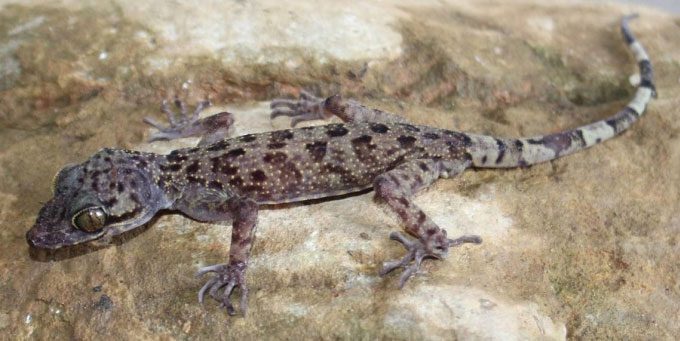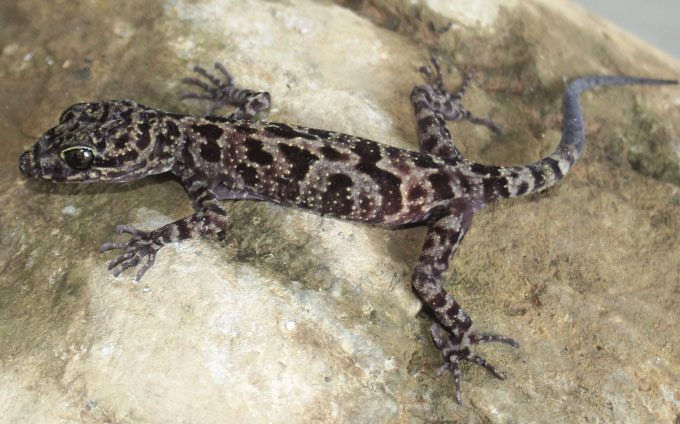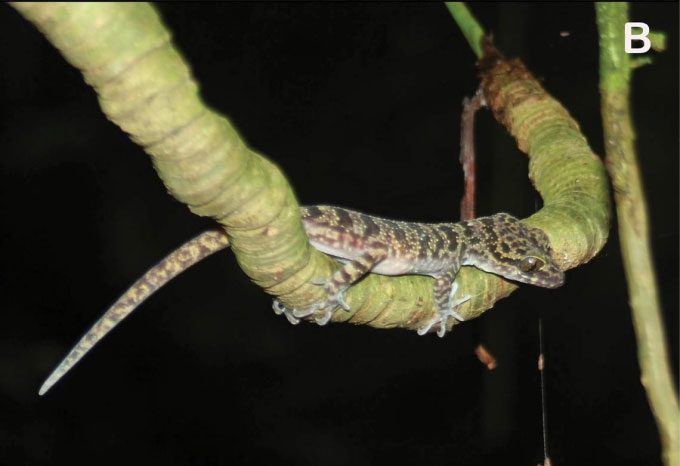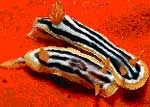The Luc’s gecko has distinctive yellow, warty spots scattered across its back and limbs, with its toes bent in the middle section.
A research team from the Institute of Ecology and Biological Resources, Vietnam Academy of Science and Technology, along with collaborators, has discovered a new species of gecko, which has only been recorded in Bac Ha District, Lao Cai Province. This species belongs to the genus Cyrtodactylus, making it the 53rd species of this genus of geckos documented in Vietnam. This work has just been published in the journal Zookeys.
The scientists named the new species Luc’s gecko (Cyrtodactylus luci), in honor of Associate Professor Dr. Pham Van Luc, former Director of the Vietnam National Museum of Nature, a zoologist who has made significant contributions to biodiversity research in Vietnam. Notably, this is the first species of gecko recorded in Lao Cai Province.

A male Luc’s gecko recorded in the wild. (Photo: Research team).
Luc’s gecko measures approximately 89.5 mm, with copper-colored eyes featuring yellow fringed spots resembling eyelids, along with warty patterns around the middle of its body. Its upper back, nape, and head are adorned with dark brown spots. DNA analysis shows that this new species has at least a 9% genetic difference compared to other gecko species.
Professor Dr. Nguyen Quang Truong, a representative of the research team, stated that the gecko was discovered during a field survey of wildlife in the limestone forest of Lao Cai Province. The new species was identified based on morphological and genetic differences from other species in the genus Cyrtodactylus both in Vietnam and globally.
He noted that the behavior of gecko species is nocturnal, often clinging to rock faces or trees. Therefore, scientists conducted nocturnal surveys in the forest to collect specimens for analysis and study.
Luc’s geckos typically inhabit secondary limestone forests featuring medium and small hardwood trees, interspersed with shrubs and vines.

Luc’s gecko has 12-15 large scales on the underside of each thigh, with 9-12 thigh pores in males and 5-10 thigh pores in females, as seen in this female specimen. (Photo: Research team).

The new gecko species lives on rock faces or trees, active at night. (Photo: Research team).
According to Professor Truong, the discovery and publication of the new species is the first step in showcasing Vietnam’s potential biodiversity and adding scientific information about living organisms. The research team will continue to assess the population status, document the species’ distribution in neighboring areas, and investigate its biological and ecological characteristics.
“This research helps evaluate the conservation status of the species for classification in the Vietnam Red Data Book or the IUCN Red List, aiming to propose effective conservation solutions,” he stated.





















































